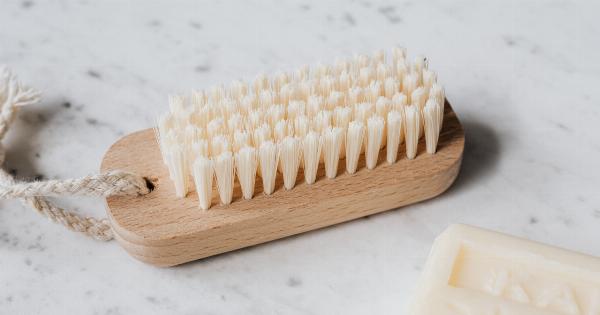With spring comes the beauty of blooming flowers, warm weather, and longer days. However, for many individuals, this season also brings along a common nuisance – allergies. One of the most affected areas during spring allergies is the eyes.
Known as allergic conjunctivitis, this condition can cause redness, itching, watering, and overall discomfort. In this article, we will explore the top allergic reactions that plague eyes during spring and discuss ways to alleviate the symptoms.
1. Pollen
Pollen is one of the primary triggers for spring allergies. As plants start to bloom, they release tiny pollen particles into the air, which can easily come into contact with your eyes.
This can lead to various allergic symptoms, including itchy and watery eyes.
2. Dust Mites
While dust mites are commonly associated with indoor allergies, they can also contribute to eye allergies during spring. Dust mites thrive in warm and humid environments, making them more prevalent as the weather gets milder.
When exposed to these microscopic creatures, eye irritation and redness can occur.
3. Mold Spores
Mold spores can be found both indoors and outdoors. During spring, increased moisture and humidity create favorable conditions for mold growth.
When mold spores are inhaled or come into contact with the eyes, they can trigger allergic reactions, including eye itching and redness.
4. Pet Dander
If you have furry friends at home, you may already be familiar with pet allergies. However, pet dander can also cause eye allergies.
As pets shed their winter coats during spring, their dander particles can become airborne and irritate the eyes of susceptible individuals.
5. Eye Cosmetics
While not directly tied to seasonal changes, the use of eye cosmetics can exacerbate eye allergies during spring. Mascara, eyeliner, and eyeshadow can trap allergens such as pollen and dust, leading to increased eye irritation.
Additionally, some individuals may be allergic to specific ingredients present in cosmetics.
6. Tree Pollen
Many people associate tree pollen with spring allergies, and for a good reason. Trees release pollen during their reproductive cycle, and different species release pollen at various times throughout the spring season.
Common tree pollen allergens include oak, birch, cedar, and pine. Exposure to tree pollen can cause allergic reactions in the eyes.
7. Grass Pollen
As the grass starts to grow and flourish, grass pollen becomes a significant allergenic trigger. Grass pollen is lightweight and can easily travel through the air, coming into contact with the eyes and causing allergic symptoms.
8. Weed Pollen
Weeds are notorious for causing allergies, and their pollen can be a nightmare for those with sensitive eyes during spring. Common weed pollen allergens include ragweed, sagebrush, pigweed, and lamb’s quarters.
Weed pollen can cause itching, redness, and watering of the eyes.
9. Air Pollution
While not an allergen itself, air pollution can worsen allergic reactions in the eyes. Pollutants in the air, such as smoke and chemicals, can irritate the eyes and make them more susceptible to allergic symptoms.
During spring, increased outdoor activities and a rise in pollution levels can aggravate eye allergies.
10. Contact Lenses
For individuals who wear contact lenses, spring allergies can pose additional challenges. Allergens can accumulate on contact lenses, leading to discomfort and irritation.
It is essential to follow proper hygiene measures, such as regularly cleaning and replacing contact lenses, to minimize allergic reactions.
While it may seem challenging to escape these common spring allergens, there are several measures you can take to relieve eye allergy symptoms:.
- Limit outdoor activities during peak pollen times, typically early morning and late afternoon.
- Keep windows closed at home and in the car to reduce the entry of allergens.
- Use air purifiers and regularly clean air conditioning filters to reduce indoor allergens.
- Wear sunglasses to shield your eyes from allergens when outdoors.
- Avoid rubbing your eyes, as it can worsen symptoms and lead to further irritation.
- Use over-the-counter artificial tears or lubricating eye drops to soothe dryness and flush out allergens.
- Consider using allergy eye drops or oral antihistamines to alleviate symptoms. Consult your doctor for personalized recommendations.
- Remove and clean contact lenses thoroughly, or consider switching to glasses during allergy flare-ups.
- Keep your living space clean and dust-free to minimize exposure to dust mites.
- Regularly wash your hands to remove allergens and prevent them from entering your eyes.
By implementing these measures, you can significantly reduce the impact of spring allergies on your eyes and enjoy the season to its fullest.





























